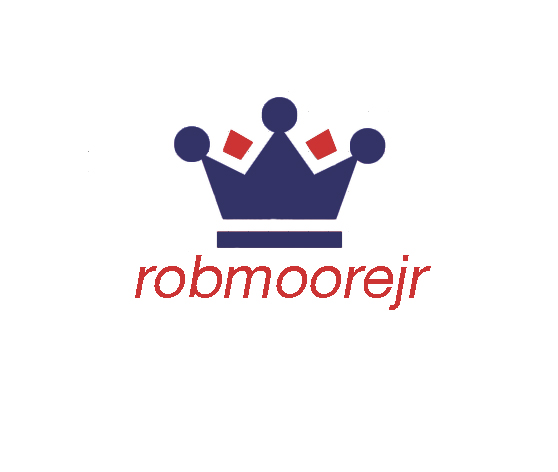Affiliate stacking ecosystem is something that businesses can use to generate additional income streams through multiple affiliate programs. By implementing this strategy, businesses can increase their brand exposure and customer reach, thereby expanding their customer base and ultimately leading to overall growth of the business.
The affiliate stacking ecosystem involves diversifying affiliate partnerships so that businesses are not relying on a single source of income. This helps mitigate risks associated with depending on one source of revenue. Additionally, by tapping into niche markets with specific affiliate programs, businesses can expand their reach and attract more customers.
One key benefit of using an affiliate stacking ecosystem is that it allows businesses to establish themselves as thought leaders in their industry. By partnering with multiple affiliates who are leaders in their respective niches, businesses can build trust with their audience and position themselves as experts in their field.
To start implementing an affiliate stacking strategy, businesses must first research potential affiliates and determine which ones align best with their brand values and target audience. It’s important to choose affiliates who have a strong reputation and a proven track record of success.
Once the right affiliates have been identified, it’s time to create a plan for how to effectively promote these partnerships. This may involve creating custom landing pages or developing unique content that highlights the benefits of each affiliate program.
Benefits of Implementing Affiliate Stacking for Business Growth
Affiliates: The Backbone of Affiliate Stacking Ecosystem
Affiliates are an integral part of the affiliate marketing business. They promote the core offer to their niche audience and earn a commission for each lead or sale. Without them, advertisers would have to rely solely on their own marketing efforts, which can be costly and time-consuming.
By working with affiliates, advertisers create the main core offer and distribute it through various channels, attracting more people and traffic to their website. This not only increases exposure but also generates income for both parties involved.
In addition to promoting the core offer, affiliates also act as brand ambassadors, sharing their positive experiences with others and building trust among potential customers. This type of social proof is invaluable in today’s digital age where consumers are bombarded with advertising messages from all directions.
Affiliate Networks: The Intermediaries
While affiliates play a crucial role in the affiliate stacking ecosystem, they cannot do it alone. That’s where affiliate networks come into play.
Affiliate networks act as intermediaries between advertisers and affiliates, providing tracking, reporting, and payment processing services to ensure smooth operations. They help advertisers find suitable affiliates for their products or services while also helping affiliates find relevant offers that align with their audience’s interests.
Moreover, affiliate networks provide valuable insights into consumer behavior by analyzing data such as click-through rates (CTR), conversion rates (CR), and average order value (AOV). This information helps advertisers optimize their campaigns for better results while also enabling affiliates to improve their performance by identifying areas for improvement.
Customers: The Driving Force
At the heart of the affiliate stacking ecosystem are customers. They are the ones who ultimately purchase the core offer, generating revenue for advertisers and commissions for affiliates.
Customers are attracted to affiliate marketing because it offers them a win-win situation – they get access to quality products or services at competitive prices while also supporting content creators they trust. Moreover, since many affiliate marketers offer exclusive discounts or bonuses, customers feel like they are getting a better deal than if they were to purchase directly from the advertiser.
Overloading Your Website with Too Many Affiliate Links
It is essential to remember that overloading your website with too many affiliate links can lead to a poor user experience and negatively impact your SEO. While it may be tempting to include as many affiliate links as possible, it is crucial to maintain a balance between promoting products and providing valuable content for your audience.
Failing to Disclose Your Affiliate Relationships
Failing to disclose your affiliate relationships can result in legal consequences and damage your reputation. It is important always to be transparent about any affiliate partnerships you have and clearly indicate when a link is an affiliate link.
Choosing Low-Quality or Irrelevant Products
Choosing low-quality or irrelevant products to promote can harm your credibility and decrease conversions. It is important always to choose products that align with your niche and provide value for your customers. Promoting low-quality or irrelevant products can lead to distrust from your audience, ultimately harming the success of your affiliate strategy.
Ignoring the Importance of Tracking and Analyzing Data
Ignoring the importance of tracking and analyzing data can prevent you from optimizing your affiliate strategy for maximum profitability. It’s essential always to track clicks, conversions, and other metrics related to each product promoted through an affiliate link. This information will allow you to optimize campaigns for better performance continually.
Relying Solely on One Affiliate Program or Network
Relying solely on one affiliate program or network can limit your earning potential and leave you vulnerable to changes in the market. Diversifying across multiple programs or networks will help ensure that if one program experiences issues, you are still generating revenue from others.
Neglecting Regular Reviews of Affiliate Partnerships
Neglecting regular reviews of affiliate partnerships can cause you to miss out on new opportunities and potentially better deals. It’s crucial always regularly review which partners are generating the most revenue, which ones aren’t performing well, and which new partners could offer more value.
Differences between Affiliate Stacking and Traditional Affiliate Marketing
Supporting Offers are Essential for a Successful Affiliate Stacking Ecosystem
One of the key differences between affiliate stacking and traditional affiliate marketing is the importance of supporting offers. In a traditional affiliate marketing model, the focus is on promoting a single product or service from one advertiser. However, in an affiliate stacking ecosystem, it’s essential to have multiple supporting offers that complement the core product being promoted.
These supporting offers can come from different advertisers and provide additional value to potential customers. For example, if you’re promoting an online course on digital marketing, you could also promote tools and resources such as email marketing software or social media scheduling tools that would be useful for anyone taking the course.
Promoting Multiple Products and Services Can Create Multiple Income Streams
Another advantage of an affiliate stacking ecosystem is that it allows you to promote multiple products and services at the same time, creating multiple income streams. Instead of relying on a single advertiser for your commissions, you can diversify your income by promoting products from different advertisers.
By doing this, you’re not only increasing your chances of making sales but also reducing your risk if one advertiser discontinues their program or reduces their commissions. Additionally, promoting multiple products and services can help establish you as an authority in your niche since you’re providing valuable recommendations beyond just one product.
Utilizing Tools and Resources Can Lead to Long-Term Success
To succeed in an affiliate stacking ecosystem requires more than just promoting products. You need to have access to tools and resources that will help you optimize your promotions and track your results effectively.
For example, many advertisers provide full training videos or webinars that cover everything from how to use their tracking links effectively to how to create high-converting landing pages. By utilizing these resources, you can improve your skills as an affiliate marketer and increase your chances of long-term success.
YouTube Can Be a Valuable Source for Promoting Products and Services
YouTube is another platform that can be valuable for promoting products and services within an affiliate stacking ecosystem. With over 2 billion monthly active users, YouTube offers a massive audience that you can tap into.
By creating high-quality videos that showcase the benefits of the products and services you’re promoting, you can attract potential customers and drive traffic to your affiliate links. Additionally, YouTube’s algorithm favors longer videos, so creating long-form content that provides value to viewers can help increase your visibility on the platform.
Having a Variety of Supporting Offers Can Increase the Chances of Making a Sale
As mentioned earlier, having supporting offers is crucial in an affiliate stacking ecosystem. However, it’s important to have a variety of supporting offers to increase your chances of making a sale.
For example, if you’re promoting an online course on digital marketing, you could offer different email marketing software options as supporting offers instead of just one. This way, potential customers have more options to choose from based on their needs and preferences.
Core Results Should Be the Focus When Selecting Products to Promote Within an Affiliate Stacking Ecosystem
Finally, when selecting products to promote within an affiliate stacking ecosystem, it’s essential to focus on core results rather than just commissions. While commissions are important, they shouldn’t be the sole factor in deciding which products to promote.
Instead, look for products that provide real value and solve problems for your target audience. By doing this, you’ll establish trust with your audience and increase your chances of making sales in the long run.
How to Build Your Affiliate Stacking Ecosystem
Freedom Breakthrough 2.0: Achieve Financial Freedom Through Affiliate Marketing
Training on Generating Free Traffic
Freedom Breakthrough 2.0 is a comprehensive program that offers training on how to generate free traffic for your affiliate marketing business. The program provides step-by-step guidance on how to build a successful affiliate marketing business, which can lead to increased earnings and time freedom.
Stacking Multiple Affiliate Programs Together
One of the key features of Freedom Breakthrough 2.0 is its focus on affiliate stacking ecosystem. This refers to the practice of combining multiple affiliate programs together in order to maximize profit potential. By leveraging different products and services, users can create a diversified income stream that is more resilient and profitable over the long-term.
Positive Reviews from Users
The program has received positive reviews from users who have seen significant results in their earnings and overall financial situation. Many users have reported that they were able to achieve financial freedom through affiliate marketing thanks to the tools and resources provided by Freedom Breakthrough 2.0.
Evaluating Program Effectiveness
If you are considering using Freedom Breakthrough 2.0 as a tool for building your own affiliate stacking ecosystem, it is important to evaluate its effectiveness based on your individual goals and needs. Consider factors such as the level of support provided by the program, the quality of training materials, and the success stories shared by other users.
Choosing the Right Affiliate Programs for Your Stack
Consider Your Niche and Target Audience
Choosing the right affiliate programs for your stack is crucial for long term success as an affiliate marketer. When deciding which programs to promote, it’s important to consider your niche and target audience. Look for programs that offer products or services that align with your niche and will appeal to your audience.
For example, if you run a blog focused on health and wellness, promoting a weight loss course could make sense. However, if you have an email list of people who are interested in home renovation projects, promoting a weight loss course may not be the best fit.
Look for High Commission Rates and Good Conversion Rates
When evaluating different affiliate programs, pay attention to commission rates and conversion rates. Commission rates refer to the percentage of each sale that you’ll earn as an affiliate. Higher commission rates mean more money in your pocket for each sale you generate.
Conversion rates refer to the percentage of visitors who click through your affiliate link and actually make a purchase. Programs with high conversion rates mean that visitors are more likely to buy after clicking through your link.
Join Multiple Affiliate Programs
Joining multiple affiliate programs can be an effective way to increase your earnings as an affiliate marketer. However, it’s important to make sure you can manage them effectively.
Start by joining one or two programs that you feel confident promoting. Once you’ve gained some experience and have established yourself as a successful affiliate marketer, consider expanding into additional programs.
Explore Different Networks
Don’t just focus on one network when looking for affiliate programs to promote. Explore different networks to find the best programs for your niche.
Some popular networks include Amazon Associates, ShareASale, CJ Affiliate, Rakuten Marketing, and Clickbank. Each network has its own set of offerings and commission structures, so take some time to research which ones might be the best fit for your needs.
The Role of SEO in Affiliate Stacking Ecosystem
Tailored Promotions for Different Audiences and Niches
Affiliate stacking has become an increasingly popular approach in the affiliate marketing world. One of its most significant advantages is the ability to promote multiple advertisers’ products or services simultaneously, allowing you to tailor promotions to different audiences and niches. With traditional affiliate marketing, you typically focus on promoting a single product or service, which can limit your earning potential.
In contrast, affiliate stacking allows you to diversify your digital marketing strategy by promoting a range of products or services across various niches. This approach can help you reach a broader audience and generate more passive income over time. By offering your audience a variety of products that cater to their specific needs and interests, you increase the likelihood that they will make a purchase through one of your links.
The Importance of Tracking and Analyzing Data
Tracking and analyzing data are critical components of any successful affiliate marketing campaign, but it becomes even more crucial when using an affiliate stacking approach. With multiple advertisers involved, tracking data from each promotion is essential to understanding which campaigns are performing well and which ones need improvement.
By analyzing data such as click-through rates, conversion rates, and revenue generated from each campaign, you can identify areas where you need to adjust your strategy. For example, if one advertiser’s product isn’t generating much revenue compared to others in the stack, it may be time to replace it with another product that better aligns with your audience’s interests.
Higher Passive Income Potential
One of the most significant advantages of affiliate stacking is its potential for higher passive income over time. While traditional affiliate marketing can be lucrative in the short term, there is often limited earning potential beyond a certain point. In contrast, by promoting multiple products or services through an affiliate stack, you create multiple streams of passive income that can continue generating revenue long after the initial promotion.
For example, suppose you have several advertisers whose products generate consistent revenue over time. In that case, you can continue to earn commissions from those products without needing to invest additional time or resources into promoting them actively.
Common Mistakes to Avoid in Affiliate Stacking Ecosystem
Failing to Understand the Basics of Affiliate Marketing
One of the most common mistakes that affiliate marketers make is failing to understand the basics of affiliate marketing. In order to be successful in this industry, it’s important to have a solid understanding of how affiliate programs work, as well as the different types of programs that are available.
Choosing the Wrong Products or Services
Another common mistake that affiliates make is choosing the wrong products or services to promote. It’s important to choose products and services that are relevant to your audience and that you believe in. If you’re promoting something that you don’t truly believe in, your audience will be able to tell and it will be difficult for you to build trust with them.
Focusing Too Much on Short-Term Gains
Many affiliates focus too much on short-term gains rather than long-term success. While it can be tempting to promote products or services solely based on their commission rates, it’s important to consider whether they align with your overall goals and values as an affiliate marketer.
Not Building Relationships with Your Audience
Building relationships with your audience is crucial for long-term success as an affiliate marketer. This means engaging with them regularly through social media, email marketing, and other channels, providing value through informative content, and being transparent about your affiliations.
Neglecting SEO Best Practices
SEO best practices are essential for driving traffic and increasing visibility for your website or blog. Neglecting these practices can result in poor search rankings, which can significantly impact your ability to earn revenue through affiliate marketing.
Overpromoting Products or Services
Overpromoting products or services can come across as spammy or pushy, which can turn off potential customers. It’s important to strike a balance between promoting relevant products and services while also providing valuable content.
Ignoring Analytics Data
Analytics data provides valuable insights into what’s working (and what’s not) with your affiliate marketing efforts. Ignoring this data can make it difficult to optimize your strategies and improve your results over time.
Tools and Resources for Successful Affiliate Stacking Ecosystem
Identify Your Niche and Target Audience
The first step in building a successful affiliate stacking ecosystem is identifying your niche and target audience. This will help you determine what type of products or services to promote, as well as the best way to reach your audience.
To identify your niche, consider your interests, expertise, and skills. What are you passionate about? What do you know a lot about? Once you have identified your niche, research your target audience. Who are they? What are their pain points? How can you help solve their problems?
Research and Choose Affiliate Programs That Align with Your Niche and Audience
Once you have identified your niche and target audience, it’s time to research and choose affiliate programs that align with them. Look for affiliate programs that offer products or services that are relevant to your niche and target audience.
When choosing an affiliate program, consider the commission rate, cookie duration, payment terms, and support provided by the program. It’s also important to read the terms and conditions carefully before signing up for any program.
Create High-Quality Content That Promotes the Affiliate Products/Services
Creating high-quality content is key to promoting affiliate products or services effectively. Your content should be informative, engaging, and relevant to your target audience.
Consider creating a variety of content types such as blog posts, videos, social media posts, email newsletters etc., all designed to promote the products/services you’re affiliated with. Make sure that each piece of content includes a call-to-action (CTA) encouraging readers/viewers/listeners to click on your affiliate link.
Utilize Various Marketing Channels to Drive Traffic to Your Content And Affiliate Links
Promoting your content across various marketing channels is crucial for driving traffic to it. Utilize social media platforms like Facebook/Twitter/Instagram/Youtube/Pinterest/LinkedIn etc., search engine optimization (SEO), paid advertising (PPC), email marketing campaigns etc., all designed to drive traffic to your content and affiliate links.
Continuously Analyze and Optimize Your Affiliate Stacking Ecosystem for Maximum Profitability
Finally, continuously analyzing and optimizing your affiliate stacking ecosystem is crucial for long-term success. Monitor your traffic sources, conversion rates, click-through rates (CTR), bounce rates etc., to identify areas of improvement.
Use supporting offers that complement the products or services you’re promoting. For instance, if you’re promoting an online course on how to make money from home, offer a supporting offer such as a full training video series on how to start an online business.
Reviewing and Evaluating Freedom Breakthrough 2.0 as a Tool for Affiliate Stacking
As we wrap up our discussion on affiliate stacking ecosystem, it’s worth mentioning that there are various tools and resources available to help you build a successful stack. One such tool is Freedom Breakthrough 2.0, an online course designed to teach you how to create a profitable online business through affiliate marketing.
The course is created by Jonathan Montoya, an experienced affiliate marketer who has made millions of dollars in commissions over the years. It covers everything from choosing the right niche and products to promote, building your website and email list, driving traffic through SEO and paid advertising, and optimizing your sales funnel for maximum conversions.
What sets Freedom Breakthrough 2.0 apart from other courses is its focus on building a sustainable long-term business rather than just making quick profits. It emphasizes the importance of providing value to your audience through high-quality content, building trust and authority in your niche, and nurturing relationships with your subscribers.
The course also includes access to a private Facebook group where you can connect with other students, get feedback on your progress, and ask questions directly to Jonathan himself. There are also regular live Q&A sessions where Jonathan shares his insights and answers any questions you may have.
Overall, if you’re serious about building a successful affiliate stacking ecosystem, Freedom Breakthrough 2.0 is definitely worth considering as a tool to help you achieve your goals. With its comprehensive curriculum, expert guidance from Jonathan Montoya, and supportive community of fellow students, it provides all the resources you need to succeed in this competitive industry.
So if you’re ready to take your affiliate marketing game to the next level and start earning consistent passive income online, check out Freedom Breakthrough 2.0 today!





Recent Comments